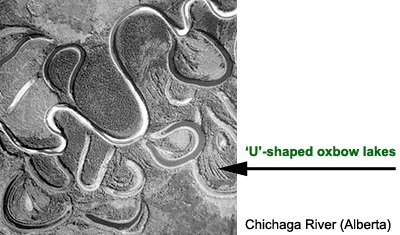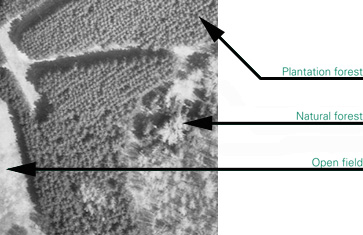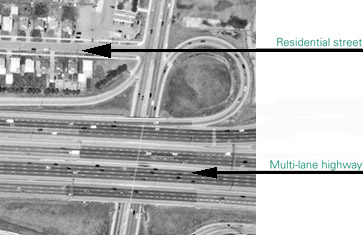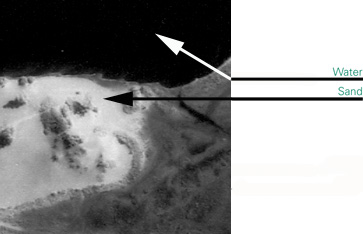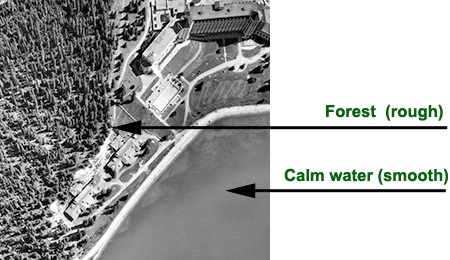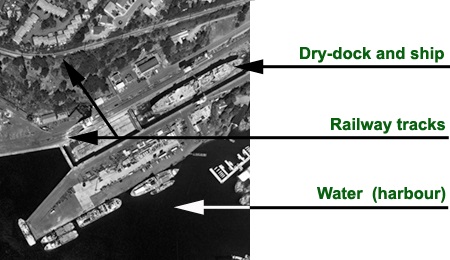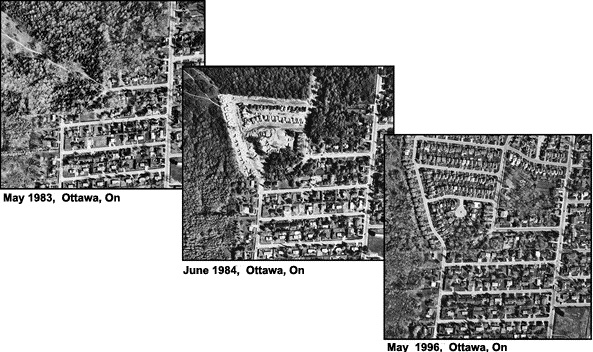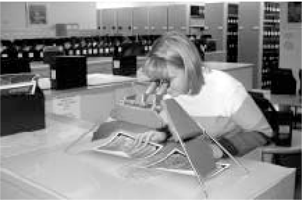What information can I find on an air photo?
Unlike a map, features on an aerial photograph are not generalized or symbolized. Air photos record all visible features on the Earth's surface from an overhead perspective. Although the features are visible, they are not always easily identifiable. The process of studying and gathering the information required to identify the various cultural and natural features is called photo interpretation. With careful interpretation, air photos are an excellent source of spatial data for studying the Earth's environment.
Factors to assess to identify a feature
Shape
The form of an object on an air photo helps to identify the object. Regular uniform shapes often indicate a human involvement.
Pattern
Similar to shape, the spatial arrangement of objects (e.g. row crops vs. pasture) is also useful to identify an object and its usage.
Size
A measure of the object's surface area (e.g. single-lane vs. multi-lane highways).
Tone/Colour
The colour characteristics of an object, relative to other objects in the photo, are used to identify the feature (e.g. sand has a bright tone, while water usually has a dark tone; tree species can be determined by the colour of their leaves at certain times of the year).
Shadow
A shadow provides information about the object's height, shape, and orientation (e.g. tree species).
Texture
The physical characteristics of an object will change the way they appear on a photo (e.g. calm water has a smooth texture; a forest canopy has a rough texture).
Association/Site
Associating the presence of one object with another, or relating it to its environment, can help identify the object (e.g. industrial buildings often have access to railway sidings; nuclear power plants are often located beside large bodies of water).
Time
Temporal characteristics of a series of photographs can be helpful in determining the historical change of an area (e.g. looking at a series of photos of a city taken in different years can help determine the growth of suburban neighbourhoods.
Stereo perspective
Seeing an area in stereo, or 3-D, is important for determining the topographical relief of an area, as well as the height of objects such as trees and building.
Stereoscopic imagery
Stereoscopic imagery is the result of overlap, which is the amount by which one photograph includes an area covered by a neighbouring photograph. Air photo coverage is generally designed to provide about 60% forward overlap between photographs. This allows stereoscopic, or 3D, viewing when the two overlapping photos are used with a stereoscope. In addition, from 20 to 40% lateral (side) overlap is allowed when complete coverage of an area is required. For mapping, inventory and vegetation studies, for example, a survey is flown in a series of to-and-from parallel strips with side overlaps between strips over the entire area.
For non-stereoscopic coverage, used in crop sampling or pollution detection, the photographer may choose a 20% forward overlap.
